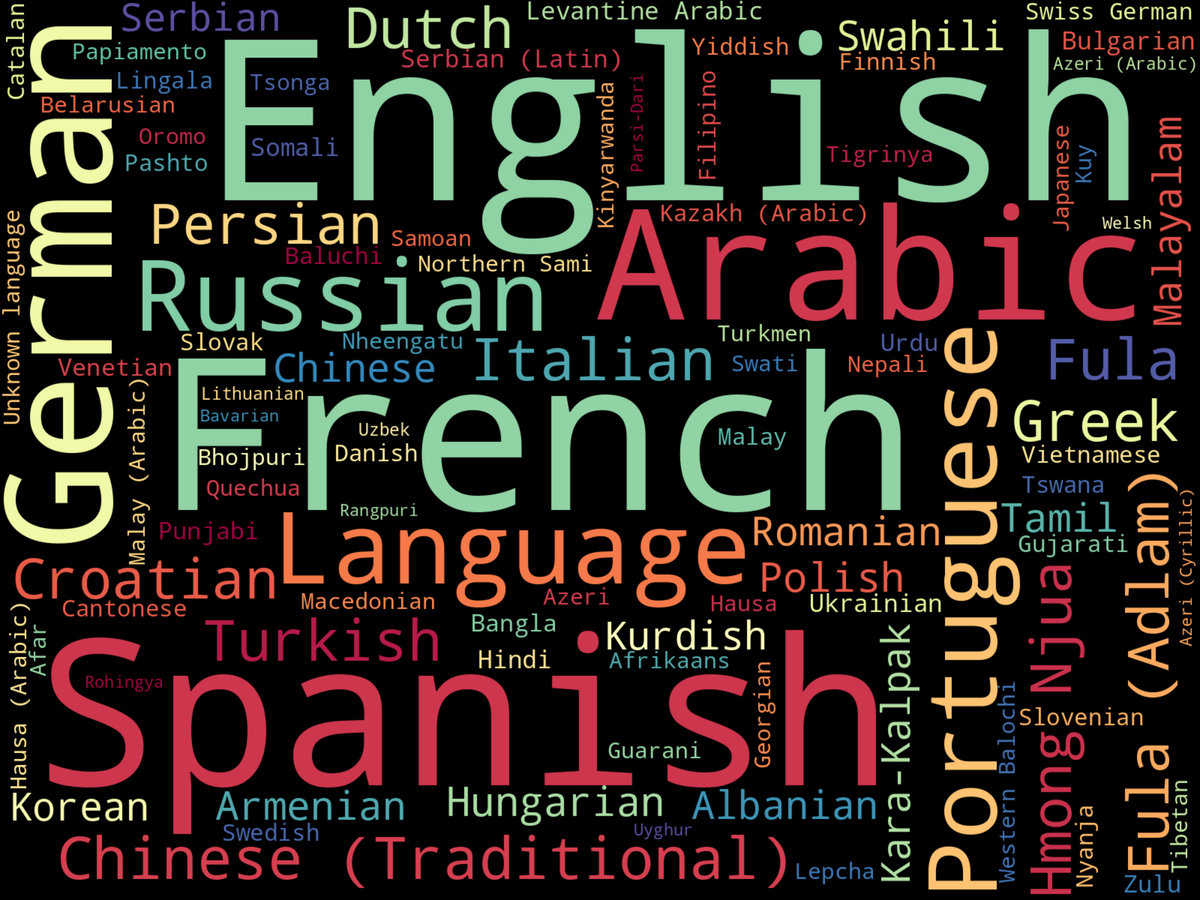Where Languages Meet Worlds
The structural role of multilingual countries
 Languages
Languages
Foundation: Unicode and Language Data
Unicode is the global standard that defines how text, numbers, and symbols are represented on computers, ensuring billions of devices and platforms can handle content consistently across hundreds of languages.
For this post, I relied on the Unicode Consortium’s Territory-Language. This dataset captures the percentage of literate, functional populations using each language in each country, providing a sociolinguistic view of global language usage.
Methodology: Building the Network
Using this dataset, a country–country network was constructed:
- Nodes: Countries with populations of at least 200,000.
- Edges: A link exists if two countries share a language spoken by at least 50% of their population.
- Filtering: Smaller components were removed, focusing on the largest connected component.
The resulting network includes 89 countries and 1338 connections.
Loading network data...
Macro-Structure of the Network
- Arabic Cluster: Dense community across North Africa and the Middle East, tied together by Arabic.
- Francophone Cluster: Extends from Europe into Africa and overseas territories, linking France, Luxembourg, Cameroon, Gabon, Congo, and Mauritius.
- Anglophone Cluster: The most globally dispersed, spanning Europe, Africa, Asia, and the Americas.
- Broker Nodes: Countries such as Tunisia, Sudan, UAE and Luxembourg serve as bridges, linking these clusters into one global system.
Key Bridges and Connectors
- Tunisia – Connects French and Arabic worlds: The sole bridge between Arabic and Francophone hubs.
- Sudan & UAE – Connect Arabic and English worlds: Sudan and UAE ties the Arabic cluster to the Anglophone.
- Luxembourg & Mauritius – Connect English and French worlds: Luxembourg unites Romance and Germanic Europe while projecting outward to Africa; Mauritius strengthens Francophone–Anglophone ties from the Indian Ocean.
- Estonia – Connects English and Russian worlds: Prevents the Russian-speaking bloc from isolation, reflecting its balance between eastern history and western integration.